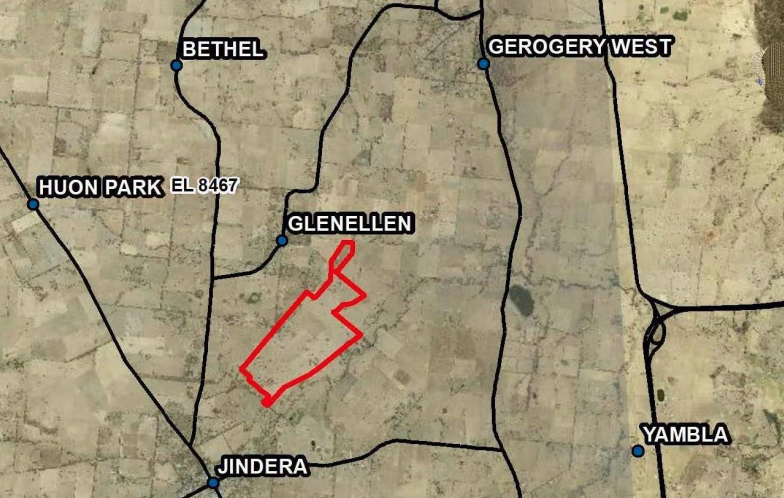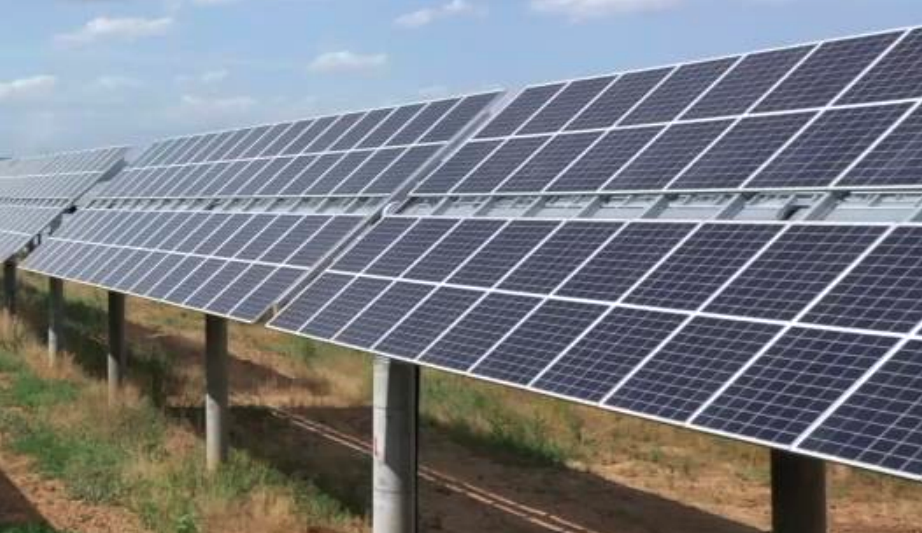The Glenellen Solar Farm, located just north of Albury in the Murray Riverina region, will incorporate agrivoltaic principles to allow sheep grazing and cropping to continue on the site, which is classified as Important Agricultural Land.
The 200 MW project is likely to include up to 416,000 solar panels installed on single axis trackers elevated to maximum of five metres off the ground. If approved, the developer Trina Solar say the solar farm will generate enough energy to power around 94,000 homes – approximately half of the households in the Murray Riverina region.

Image: Trina Solar
Trina Solar, which bought the Glenellen Solar Farm originally proposed by CWP Renewables in February of this year, has proposed using bifacial monocrystalline modules in the array.
A TransGrid 330 kV transmission line directly crosses the proposed project area, and will provide the system’s connection to the National Electricity Grid. Although it was considered, battery storage is no longer a part of the proposed design.
Trina’s ‘Agri-solar’ approach
In its Environmental Impact Statement, Trina Solar says it plans to maximise space between the rows of panels to allow the coexistence of cropping or grazing of sheep on a rotation basis, with grasses sown for ground cover and grazing fodder. The expected panel heights, Trina Solar adds, are sufficient to allow animals to pass freely underneath. An ancillary benefit of the plan is grazing sheep will keep grasses low, reducing fire fuel loads and managing weeds.
The company says arrangements will be established with host landholders to enable them to have safe access and passage into the solar facility to manage agricultural activity.
Agrivoltaics are being embraced around the world, gaining momentum as a way to maximise output and value of agricultural lands as well as develop solar projects without taking the land from local farmers, which can sometimes lead to backlash from communities and local governments. In fact, a similar agrivoltaics project is progressing in Tamworth in northern NSW, being pitched as a “guaranteed income to farmers” who will be paid by solar companies who lease their land. 
Keeping in the vein of making the most of existing structures, Trina Solar say it plans to maximise the use of already cleared land for the solar project’s location, preserving the site’s native woodland, watercourses and areas potentially used as habitat.
The solar farm is intended to operate for more than 30 years, returning to agricultural use following that period.
Glenellen Solar Farm, located in the Greater Hume Shire local government area, will remain on public exhibition until November 30.
This content is protected by copyright and may not be reused. If you want to cooperate with us and would like to reuse some of our content, please contact: editors@pv-magazine.com.









By submitting this form you agree to pv magazine using your data for the purposes of publishing your comment.
Your personal data will only be disclosed or otherwise transmitted to third parties for the purposes of spam filtering or if this is necessary for technical maintenance of the website. Any other transfer to third parties will not take place unless this is justified on the basis of applicable data protection regulations or if pv magazine is legally obliged to do so.
You may revoke this consent at any time with effect for the future, in which case your personal data will be deleted immediately. Otherwise, your data will be deleted if pv magazine has processed your request or the purpose of data storage is fulfilled.
Further information on data privacy can be found in our Data Protection Policy.